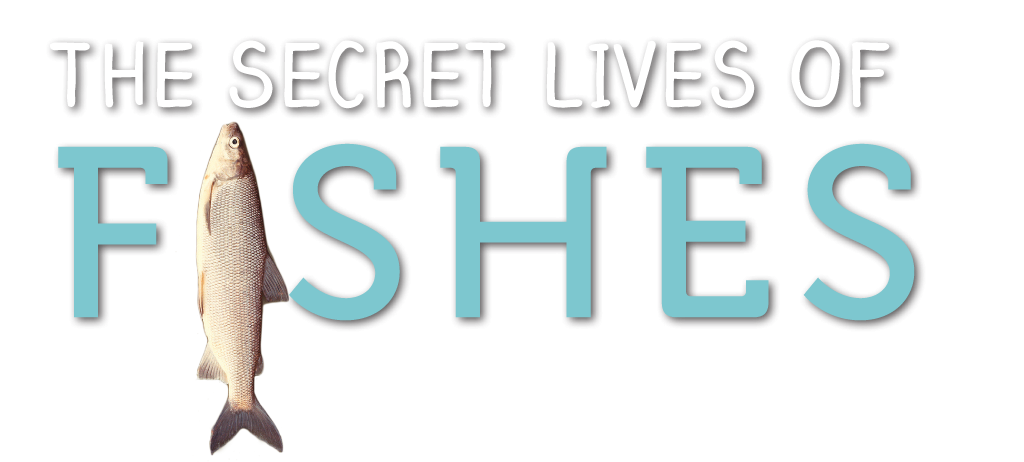Burbot a story of survival
From the Summer 2015 Issue
Chris Bier

Decades ago the burbot and many other species flourished in and along the Kootenai.
A burbot looks like it should be the love child of a catfish and an eel instead of the only freshwater member of the cod family. A somewhat flattened head sports a single chin barbel and a wide mouth filled with small teeth. Fan-shaped pectoral fins attach to a compressed and elongated body topped by two low dorsal fins – one short followed by one long. A similarly long anal fin and a rounded tail fin bring up the rear. Their mottled skin patterns blend with the dappled river and lake bottoms in which they dwell, and their coloration ranges from deep olives and creams to an almost dusty “ghost” gray.
On average, burbot range from 11 to 24 inches in length and weigh 2 to 6 pounds, but in the right environment, burbot grow to over 3 feet long, weigh over 30 pounds and live upwards of 20 years. Distributed in cold, clear water throughout the northern latitudes of the world, burbot is native only to Boundary County’s Kootenai River in Idaho.
Decades ago, when the Kootenai River iced over every winter, before thousands of acres of wetland disappeared behind dikes to promote agriculture, and dams were installed to generate power and flood control, burbot and many other species flourished in and along the Kootenai.
When the deep freeze of winter would settle across the valley and everything warm-blooded hunkered down to wait out the cold, for two or three weeks beneath the January/February ice, the burbot would spawn over the sandy substrates in the slack water of the Kootenai and dozens of tributaries. A writhing knot of male and female fish cavorting beneath the ice until the water turned to froth and millions of fertilized eggs, each slightly bigger than a grain of sand, hung suspended like a living cloud of silt.
Traditionally, during the spawn is when the members of the Kootenai Tribe would fish for the “leopard of the Kootenai.” Tribal Chair Gary Aitken Jr. said: “We mostly fished for them in the winter, in January or February. There was about a two week time frame, when they were spawning. They would move up in the creeks. We’d use the same weirs that we’d used in the summer but make them up heavier duty. We’d have to actually break through the ice each time to collect and try and look and see how the fish were doing. When we were done fishing, we’d clean them out, and roast or smoke them over a fire. … That’s when we had a plentiful burbot. Instead of a whole tribal thing where you’d feed everybody, it was more a family responsibility. Each family would have a different creek or a different area. They would build their weirs and collect them, and you’d have enough food to eat.”
It’s a simple fact that things change. More people means the available resources have to be shared and divided, again and again. Eventually something is bound to come up short.
No one factor explains what caused the decline of burbot in the Kootenai River system: habitat loss and alteration, weather dynamics, overexploitation, or the reduction of mysis shrimp for burbot forage. However, a tipping point arrived with the building of the Libby Dam in the 1970s. Vital nutrients became trapped in the reservoir behind the dam, water currents altered from natural cycles, and overall water temperature climbed.
The following statement reads like an obituary: “Idaho Fish and Game (IFG) has been monitoring the movement, habitat use and spawning behavior of burbot since 1993 and has not found evidence of successful spawning or recruitment in Idaho.”
Repeated samplings of the river indicated the population of burbot had dropped to less than 100 fish. For all practical purposes, the native strain of burbot in the Kootenai River was gone – wiped out – functionally extinct.
Aitken said, “Every animal has a song.” Over the course of the last five decades, the mighty, boisterous chorus of the Kootenai burbot dwindled to a few broken voices. Was anyone listening?
Between 1999 and 2002, IFG, Idaho Conservation League and the American Wildlands convened studies, filed petitions and lawsuits with and against the U.S. Fish and Wildlife Service, but by 2003 all of these attempts had stalled out at the federal level.
By October 2001, the Kootenai Valley Resource Initiative (KVRI) was formed under a joint powers agreement between the Kootenai Tribe of Idaho (KTOI), the city of Bonners Ferry and Boundary County. This partnership realized everyone benefited by working together to resolve natural resource issues.
According to documents provided by the KTOI, “The KVRI membership and its partners include the Tribe; federal, state, and provincial fisheries and water regulatory agencies; local city and county government; private citizens and landowners; environmental advocacy groups; and local representatives of business and industry.”
For the first time, everyone came to the table and sat down to resolve the issue of burbot recovery.
In 2005, “The KVRI Burbot Conservation Strategy was completed and a multilateral conservation agreement was signed to ensure burbot population decline would be addressed,” the documents state.
The effort to restore burbot is international. The large, vital commercial burbot fishery that once existed in British Columbia’s West Arm Kootenay Lake vanished and the B.C. Ministry and the people of Canada want to see burbot thrive again.
According to Kenneth Cain, a University of Idaho professor in the Department of Fish and Wildlife Sciences and associate director of the Aquaculture Research Institute, someone heard. The Kootenai Tribe had been working collaboratively with the management agencies in both the United States and Canada, and made arrangements to bring in the University of Idaho as a partner as well.
“We started working with burbot in 2003. The Kootenai Tribe started to investigate the potential to develop a conservation aquaculture program to produce burbot in captivity and release them into the Kootenai River to rebuild the nearly extirpated population,” said Cain. “They had worked with us previously, for their white sturgeon program. We had a facility and programs here that could assist them in developing some of the techniques, in order to actually rear this fish in captivity.”
The next few years would involve a lot of trial and error. Raising burbot in captivity was an endeavor with more questions than documented answers.
The first adult burbot, under a cooperative arrangement with British Columbia, arrived at the lab in October 2003, months before they would be ready to spawn, and they needed to be sorted into different tanks.
“The fact that you can’t tell the males apart from the females is something a lot of people don’t realize,” said Cain. “The sex differentiation thing is a tough one. There’s no outside characteristic that we’ve been able to effectively figure out. … At the time of spawning, all you got to do is squeeze the male and you can see the milt coming out. And if nothing comes out, it’s probably a female, in most cases. We had to bring a radiologist, from the Vet School at WSU, with an ultrasound machine. This guy had done Atlantic salmon for Norway and he was used to looking at fish. These fish look different, but after about the second fish, he was 100 percent. He had it all figured out after that.”
In February 2004, they successfully spawned the fish in their lab, but growing them to a size that can be stocked is another matter altogether.
Burbot eggs hatch, becoming larvae the size of an eyelash. For the first 10 to 14 days, they have no mouth. When they do start eating, they require very, very small food, rotifers and artemia – think sea monkeys, which must be alive, because burbot cue in on movement. So, you not only have to raise the fish, you also have to raise the food to feed the hungry masses.
“The first year, we had probably 5 to 8 million eggs, and we had four fish out of that whole batch. They are so small when they hatch. At that time, we didn’t know any of the techniques. They would just disappear if you looked at them wrong. They didn’t like to survive. They would get out of any little area and just not be there the next day,” said Cain.
Eventually, they reach a size where they can eat a formulated food. Cain added: “You’ll lose a lot during that transition period, when they are trying to go from a live to a dry feed, because they like to eat each other. That’s a big problem.”
At this stage, they need to be separated by size and have a limitless amount of food in front of them. Otherwise, you end up with a few large fish in your tank that have cannibalized the others.
While Cain and his students continued to work through the mysteries of successfully raising burbot in captivity and releasing them into the wild, the Kootenai Tribe’s Kootenai River Habitat Restoration Program was under way and gaining ground.
In July 2009, the Kootenai River Habitat Restoration Program Master Plan unfurled. This holistic, ecosystem-based plan strives to mitigate or restore the lost habitat in and along the Kootenai River. Work started in 2011 and will continue for several years to come. Each phase of the project is designed to restore the food web, enhance or create suitable habitat, promote the growth and sustainability of native fish species, and at the same time assist landowners and encourage community involvement. The needs of the people who depend on the Kootenai River for power, recreation and their livelihoods are of primary importance.
Funding for these projects and many others is being provided by Bonneville Power Administration (BPA) through the Northwest Power and Conservation Council’s Fish and Wildlife Program.
The goal is to have sustainable populations of burbot, sturgeon and other species that can be used for cultural and subsistence purposes, but first you have to resolve the underlying factors that destroyed the populations in the first place.
Under a cooperative arrangement with the Kootenai Tribe, IFG and the Canadian provincial government, the first release of burbot produced in the University of Idaho facilities occurred in 2009 and has continued every year since. With the Twin Rivers Sturgeon and Burbot Hatchery completed in 2014, rearing burbot will transition from the university to the KTOI.
Cain said: “We’ve tagged those fish. IFG has worked with us. They’ve followed those fish, using sonic transmitters. The B.C. Ministry of Environment tracked these fish all the way to the north end of Kootenay Lake. They’ve been found all the way to the Montana border and there is good evidence now, pretty definitive evidence, that some of the fish put out there are spawning naturally in the river.”
The passion and drive poured into the recovery efforts appears to be paying off, but the river is a long way from sustainable populations. No one is even sure how many fish make up a thriving, self-maintaining community. Shawn Young, KTOI Aquaculture Program manager, said: “There wasn’t a lot of historical data collected before Libby Dam.”
A lack of “historical data” means no baseline with which to work. “It’s really hard to gauge exactly what the level should be after all those decades of changes,” said Young. “Some folks from IFG and other agencies, back in the 2000s, tried to do some exercises with the best available data. The number we’re ultimately shooting for is somewhere around 17,000 to 18,000 spawning adults.”
Burbot reach sexual maturity, on average, between 3 and 4 years old, which doesn’t seem like a long time, unless you’re a fish in a wild and unpredictable river surrounded by other hungry creatures.
Even the largest burbot are poor swimmers against a current. In the past, changing flow rates from the Libby Dam have prevented fish from reaching suitable spawning areas. Remember, these fish spawn in near freezing temperatures. Since the installation of the dam, the Kootenai River rarely ices over. If the river temperature goes above 43 F, most eggs will die.
Newly hatched larvae spend their first few days drifting with the current, looking for food. Nutrients are currently being added to the river to promote zooplankton growth, but to date, forage in the river remains patchy.
In a hatchery setting, water temperatures, food density and a host of other factors may be intensely controlled to provide the optimum environment to produce healthy fish.
Referring to projections for the new hatchery, Young said, “If we have 6 million good, viable, healthy eggs, we’re hoping to get about 100,000 to 125,000 six-month-old juveniles for release.” IFG conducts river sampling during the winter. Strategies for reducing mortality rates are implemented and adapted; every possible factor for mitigating the altered nature of the Kootenai River habitat is considered. The “song” of the burbot grows stronger with each new voice in the river.
What is at stake for the KTOI if the burbot recovery program fails? “We’d be losing a huge part of our spirituality,” Aitken said. “I don’t even want to think about the possibility. To lose a species is unfathomable. So, we’re trying our best to keep them around. I think the way we’re doing it we’re going to be successful.”
Maybe this is the generation that will hear every note of the music restored.





What do you feed these Burbot?
Depending on what waters they live in, burbot prey on whitefish, grayling, young northern pike, suckers, stickleback, trout, and perch. At times, burbot also eat insects and other macroinvertebrates, and have been known to eat frogs, snakes, and birds.